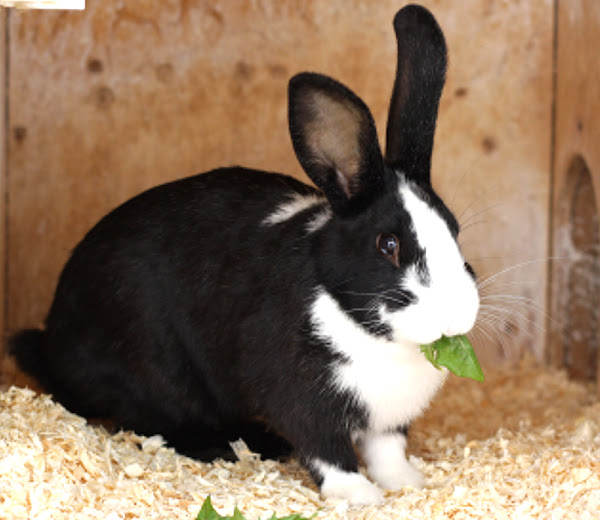The Mellerud rabbit is a very old variety of rabbit. It was originated from Sweden, and was referred to as bondkaniner (farm-rabbits) in as early as 1881.
The Mellerud rabbit has official landrace status in Sweden and is considered a critically endangered variety. Landrace means the animal breed that has been improved by traditional agricultural methods. And the Gotland rabbit is another well known landrace from Sweden. The Mellerud rabbit shares part of it’s history with this well known rabbit.
Both landraces originated from old lines of farm rabbits that were once very common throughout Sweden. And they were raised mainly for their meat and pelts. These farm rabbits disappeared from most parts of the country in 1990s and were largely believed to be extinct.
But a few rabbits of old farm type were discovered in the late 1990s. Those rabbits were in the care of an older woman in Mellerud, referred to as “Edith i Sjöskogen”. She was an experienced and long time rabbit keeper since at least 1937. Though the line she kept was believed to be older still.
Today some breeders and the Gotland Rabbit Society are trying to preserve the breed. The Gotland Rabbit Society is responsible for the preservation work of the Mellerud rabbit along with the Gotlands. The number of this variety is gradually increasing. As of 2013, there are approximately 160 registered Mellerud rabbits.
Mellerud Rabbit Physical Characteristics
Mellerud rabbits are medium sized animal. In terms of conformation, they are similar to the Gotland rabbits. The Mellerud bucks are usually somewhat more compact with a rounder head and thicker muzzle. But the body of the does are relatively elongated with a fine head.
Usually does are heavier and larger than bucks in most rabbit breeds. But in the case of Mellerud rabbit, there is no weight difference between the bucks and does.
The ears of the Mellerud rabbit are medium in length and relatively thin. Their ears are somewhat large with an alert expression and pointed rather than rounded. The color of their eyes are brown, blue or a mixture of the two.

Mellerud rabbits have fine short coat of either albino or black color with spotting, referred to as Dutch rabbit markings. There is a higher degree of variation in the white markings than in most traditional show breeds. Because the breeders of the Mellerud rabbit have never strived to standardize the markings in the variety.
And most Melleruds exhibit white muzzles, white front of chest, blazes to varying degrees and white front paws. The white markings on this variety may also extend to and include the sides of the face, the back, the shoulders and/or the hind legs.
The Mellerud rabbits are medium in size and their average body weight is between 3 and 3.5 kg. Photo from Wikipedia.
Uses
The Mellerud rabbit was a farm rabbit. And it was mainly raised for meat production and for pelts.
Special Notes
The Mellerud rabbit is a hardy and strong animal. The variety is curious and lively in temperament. They are often considered to be somewhat calmer than the Gotland rabbits.
On average the Mellerud does tend to produce smaller litters. And compared to modern production breeds, the Mellerud kids grow relatively slowly. But they require less feeds than the modern meat rabbits.
They are generally hardy and well adapted to living outdoors throughout the year. They are also protected against drafts and harsh sunlight.
Like most other rabbit breeds, the Mellerud rabbit also require healthy food and all time access to fresh water for staying healthy and productive. Their average lifespan is about 5 to 8 years. Review full breed profile of the Mellerud rabbit in the following chart.
| Breed Name | Mellerud |
| Other Name | Bondkaniner |
| Breed Purpose | Meat & Pelts |
| Breed Size | Medium |
| Weight | Between 3 and 3.5 kg |
| Suitable for Commercial Production | No |
| Good as Pets | Yes |
| Climate Tolerance | All Climates |
| Color Varieties | Albino, Black |
| Rarity | Rare |
| Country of Origin | Sweden |






